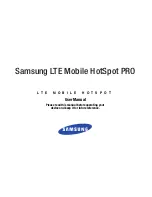
Reference Manual for the 54 Mbps Wireless Travel Router WGR101
D-8
Wireless Networking Basics
February 2005 (202-10034-03)
How to Use WEP Parameters
Wired Equivalent Privacy (WEP) data encryption is used when the wireless devices are configured
to operate in Shared Key authentication mode. There are two shared key methods implemented in
most commercially available products, 64-bit and 128-bit WEP data encryption.
Before enabling WEP on an 802.11 network, you must first consider what type of encryption you
require and the key size you want to use. Typically, there are three WEP Encryption options
available for 802.11 products:
1.
Do Not Use WEP:
The 802.11 network does not encrypt data. For authentication purposes, the
network uses Open System Authentication.
2.
Use WEP for Encryption:
A transmitting 802.11 device encrypts the data portion of every
packet it sends using a configured WEP Key. The receiving 802.11b device decrypts the data using
the same WEP Key. For authentication purposes, the 802.11b network uses Open System
Authentication.
3.
Use WEP for Authentication and Encryption:
A transmitting 802.11 device encrypts the data
portion of every packet it sends using a configured WEP Key. The receiving 802.11 device
decrypts the data using the same WEP Key. For authentication purposes, the 802.11 network uses
Shared Key Authentication.
Note:
Some 802.11 access points also support
Use WEP for Authentication Only
(Shared Key
Authentication without data encryption). However, the WGR101 does not offer this option.














































